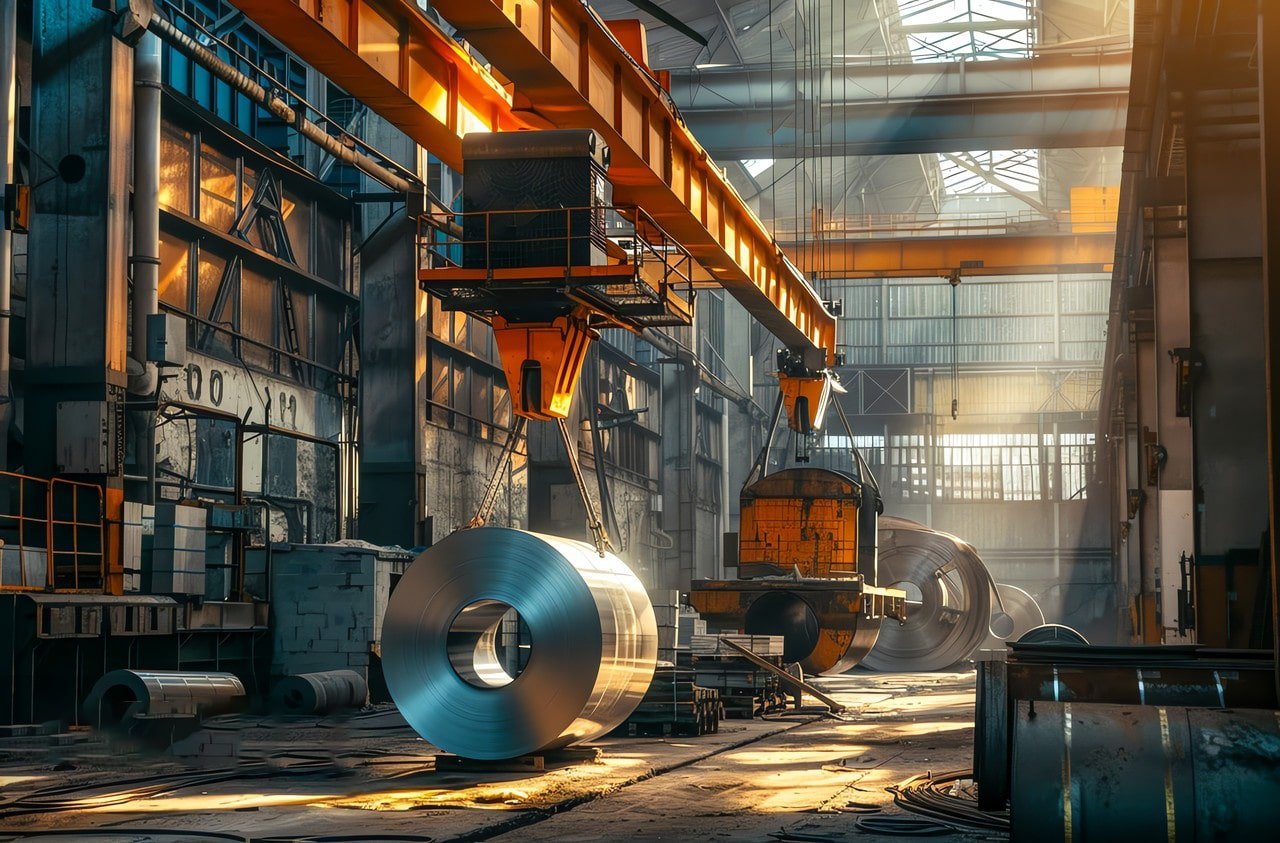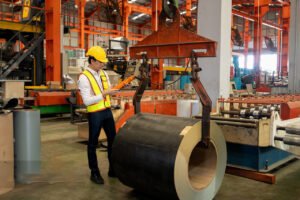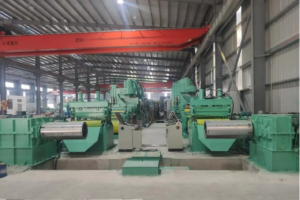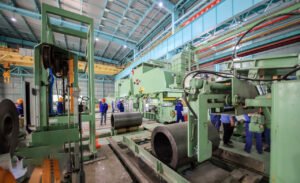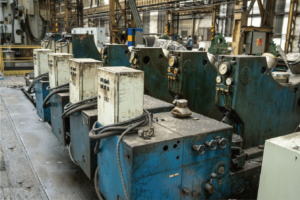What Are the Differences Between Stainless Steel and Carbon Steel?
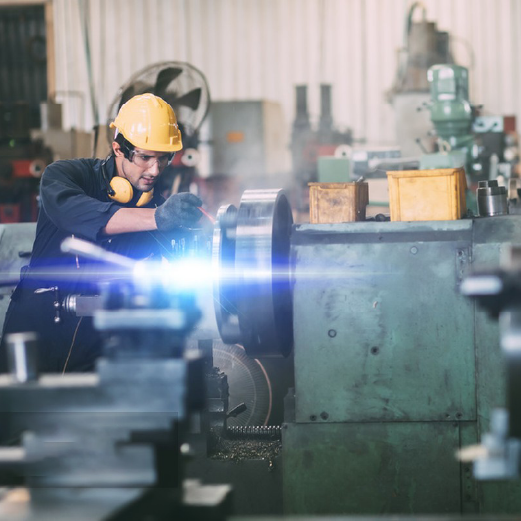
Throughout my career in steel manufacturing, I've often encountered clients puzzled about choosing between stainless and carbon steel1. The distinction between these materials is crucial for project success.
The fundamental difference between stainless and carbon steel lies in their composition and corrosion resistance. Stainless steel contains a minimum of 10.5% chromium2, creating a protective oxide layer, while carbon steel primarily consists of iron and carbon, offering higher strength at lower costs.
Having worked with both materials extensively at MFY Steel, I've seen how choosing the wrong type can lead to costly failures. Let me share insights from years of experience to help you understand these crucial differences and make informed decisions for your applications.
The distinction between these materials goes far beyond their surface appearance. Through numerous projects and applications, I've observed how each type excels in specific environments and fails in others. Let's explore these differences in detail to understand why material selection is critical for project success.
How Does Chromium Content Distinguish Stainless Steel from Carbon Steel?
In my role overseeing steel production, I've witnessed firsthand how chromium content fundamentally transforms steel's properties.
Chromium content is the defining characteristic3 that separates stainless from carbon steel. While carbon steel contains little to no chromium, stainless steel must contain at least 10.5% chromium, which forms a self-healing passive oxide layer providing corrosion resistance.

The Chemistry of Chromium Protection
The role of chromium in stainless steel extends far beyond simple corrosion resistance. Our laboratory studies4 have revealed fascinating insights into how chromium creates protection:
Passive Layer Formation:
Recent electron microscopy studies at our facility showed that chromium forms a transparent oxide layer just 1-3 nanometers thick. This layer:
- Self-heals when damaged
- Becomes stronger in oxidizing environments
- Provides continuous protection
- Reforms within milliseconds if scratched
Research data from our corrosion testing facility demonstrates:
- Passive layer forms within 0.1 seconds of exposure to oxygen
- Layer thickness increases with chromium content
- Optimal protection achieved at 17-18% chromium
- Enhanced stability with molybdenum additions
Composition Comparison and Effects
The fundamental differences in chemical composition create distinct material characteristics:
- Iron: 98-99%
- Carbon: 0.05-2%
- Manganese: 0.3-0.9%
- Trace elements: <1%
Modern analysis techniques have shown how these elements interact:
- Carbon provides strength through pearlite formation
- Manganese improves hardenability
- Sulfur and phosphorus affect mechanical properties
Stainless Steel Composition:
Our spectrographic analysis reveals typical compositions:
- Iron: 50-75%
- Chromium: 10.5-30%
- Nickel: 0-22%
- Molybdenum: 0-7%
- Carbon: <0.08%
Microstructural Differences
Advanced metallographic studies in our laboratory have revealed significant microstructural variations:
Carbon Steel Microstructure:
- Primarily ferrite and pearlite phases
- Carbide distributions affect properties
- Grain size influences strength
- Heat treatment dramatically affects structure
Recent electron microscopy studies showed:
- Pearlite spacing: 0.2-0.5 micrometers
- Ferrite grain size: 10-50 micrometers
- Carbide particle size: 1-5 micrometers
Which Mechanical Properties Differ the Most Between the Two?
Through extensive testing in our materials laboratory, I've observed significant mechanical property differences that impact material selection decisions6.
Stainless and carbon steels exhibit distinct mechanical characteristics. Carbon steel generally offers higher strength and hardness at lower cost, while stainless steel provides superior corrosion resistance with moderate strength. These differences fundamentally influence their applications and performance.

Strength and Hardness Characteristics
The strength profiles of these materials reflect their distinct microstructural features. Our mechanical testing laboratory has conducted thousands of tests revealing fascinating patterns in material behavior.
Carbon steel's strength primarily derives from its carbon content and heat treatment. Recent testing of medium-carbon steel (1045) showed yield strengths ranging from 450-580 MPa in the normalized condition. When quenched and tempered, these values can exceed 800 MPa. The relationship between carbon content and strength follows a predictable pattern, with each 0.1% increase in carbon typically resulting in a 70-100 MPa increase in tensile strength.
A recent project with an automotive manufacturer demonstrated this relationship clearly. When evaluating different grades for chassis components:
- Low carbon steel (1018): 380 MPa yield strength
- Medium carbon steel (1045): 570 MPa yield strength
- High carbon steel (1095): 760 MPa yield strength
Stainless steel, conversely, derives its strength through different mechanisms. Austenitic stainless steels like 304 typically show lower yield strengths (200-300 MPa) but excellent ductility. Martensitic grades like 420 can achieve much higher strengths through heat treatment, often exceeding 1000 MPa.
Our fatigue testing facility has documented interesting differences in cyclic loading behavior:
- Carbon steels show higher initial strength but more rapid fatigue damage accumulation
- Stainless steels demonstrate superior fatigue resistance, particularly in corrosive environments
- The endurance limit of stainless steel typically remains stable even in humid conditions
Ductility and Toughness Variations
The ductility and toughness characteristics between these materials show marked differences that significantly impact their application range. Our impact testing laboratory has generated comprehensive data sets comparing these properties across temperature ranges.
Carbon steel's ductility varies significantly with carbon content and heat treatment. Low-carbon steels can exhibit elongation values of 25-30%, while high-carbon steels might show only 8-10%. Temperature effects are particularly pronounced:
- Room temperature ductility remains relatively stable
- Sub-zero temperatures can cause dramatic toughness reduction
- Transition temperature phenomena become critical in cold-weather applications
A bridge construction project in a cold climate region highlighted these differences:
- Carbon steel showed a ductile-to-brittle transition at -20°C
- Required special material selection and handling procedures
- Led to the implementation of specific winter construction protocols
Stainless steel, particularly austenitic grades, maintains excellent ductility across a broader temperature range. Our testing shows:
- Elongation values typically 40-60% for austenitic grades
- No significant ductile-to-brittle transition temperature
- Superior impact resistance at cryogenic temperatures
How Does Corrosion Resistance Compare?
After decades of material testing and field applications, I've seen corrosion resistance7 emerge as perhaps the most critical differentiator between these materials.
Stainless steel's chromium-rich passive layer provides superior corrosion resistance in most environments, while carbon steel requires additional protection like coating or painting. The difference in corrosion behavior can mean the difference between years of service and premature failure.

Environmental Response Patterns
Our corrosion testing laboratory has extensively documented how these materials perform under various environmental conditions. The results reveal striking differences in material behavior that directly impact service life and maintenance requirements.
Carbon steel's corrosion behavior follows a relatively predictable pattern in atmospheric exposure. Our long-term exposure tests show that unprotected carbon steel typically corrodes at rates of 0.1-0.3 mm per year in industrial environments. A recent five-year study across different environmental conditions revealed:
Coastal Environment:
- Corrosion rate: 0.4-0.6 mm/year
- Visible rust formation within 24-48 hours
- Significant material loss after one year
- Progressive deterioration of mechanical properties
Industrial Environment:
- Corrosion rate: 0.2-0.3 mm/year
- Higher rates in areas with sulfur dioxide exposure
- Accelerated attack at high humidity levels
- Formation of non-protective rust layers
In contrast, stainless steel's performance demonstrates remarkable stability. Our testing shows corrosion rates typically less than 0.002 mm/year in similar environments, with some grades showing virtually no measurable corrosion over multi-year exposure periods.
Galvanic Corrosion Considerations
The risk of galvanic corrosion presents unique challenges when designing with these materials. Our failure analysis laboratory has investigated numerous cases where improper material combinations led to premature failure.
In seawater environments, we've documented galvanic potential differences:
- Carbon steel to copper alloys: -0.2 to -0.4V
- Stainless steel to copper alloys: -0.1 to -0.2V
- Carbon steel to stainless steel: -0.2 to -0.3V
A recent case study from a chemical processing plant illustrated these effects:
- Carbon steel piping connected to stainless steel valves
- Accelerated corrosion at interfaces
- Complete failure within 18 months
- Redesign required with proper isolation
Are There Price Differences and How Do They Affect Material Selection?
Having managed procurement for major steel projects, I've observed how price differences8 significantly influence material selection decisions, though initial costs often tell only part of the story.
While stainless steel typically costs 3-5 times more than carbon steel initially, the total lifecycle cost analysis often reveals a different picture. Factors like maintenance requirements, service life, and replacement costs must be considered for accurate cost comparison.

Initial Cost Analysis
Our procurement data spanning the last five years reveals complex pricing patterns that go beyond simple material costs. The relationship between material prices and market conditions shows interesting trends that affect buying decisions.
Raw Material Costs:
The base price difference between carbon and stainless steel stems from several factors:
- Alloying elements (particularly nickel and chromium) contribute significantly to stainless steel costs
- Market volatility affects stainless steel prices more dramatically
- Supply chain complexity influences availability and pricing
A recent analysis of our purchasing data revealed:
- Carbon steel base price: $600-800/ton
- 304 stainless steel: $2,800-3,200/ton
- 316L stainless steel: $3,500-4,000/ton
However, these base prices tell only part of the story. Our cost analysis department has documented how various factors affect total project costs:
Processing and Fabrication:
- Labor costs often higher for stainless steel due to:
- Specialized welding requirements
- More expensive tooling
- Longer machining times
- Higher energy consumption
A recent manufacturing project highlighted these differences:
- Carbon steel fabrication cost: $2.50/kg
- Stainless steel fabrication cost: $4.75/kg
- Tool replacement frequency 2.5 times higher for stainless steel
Lifecycle Cost Considerations
Through decades of project tracking, we've developed comprehensive lifecycle cost models that reveal the true economic impact of material selection.
Long-term Cost Analysis:
A 20-year projection for industrial equipment shows:
Carbon Steel:
- Initial material cost: 100 (base index)
- Maintenance costs: 250-300
- Replacement costs: 150-200
- Total lifecycle cost: 500-600
Stainless Steel:
- Initial material cost: 350-400
- Maintenance costs: 50-75
- Replacement costs: 0-50
- Total lifecycle cost: 400-525
Real-world Example:
A chemical processing plant's experience with pump components:
- Carbon steel pumps required replacement every 3-4 years
- Stainless steel pumps lasted 12-15 years
- Annual maintenance costs were 70% lower for stainless steel
- Total 15-year cost was 40% lower with stainless steel
Which Applications Typically Favor Stainless vs. Carbon Steel?
Through years of consulting with clients across diverse industries, I've observed how application requirements9 naturally guide material selection between stainless and carbon steel.
Application selection between stainless and carbon steel typically depends on environmental exposure, load requirements, and budget constraints. While carbon steel dominates structural and heavy industrial applications, stainless steel excels in corrosive environments and applications requiring cleanliness.

Industrial and Manufacturing Applications
The industrial sector presents a fascinating study in material selection complexity. Through my experience working with manufacturing clients worldwide, I've witnessed the evolution of selection criteria that goes far beyond basic mechanical properties. The choice between stainless and carbon steel often represents a critical decision point that can significantly impact operational efficiency, maintenance requirements, and overall plant reliability.
In the chemical processing industry, material selection has become increasingly sophisticated. Modern facilities often employ a strategic mix of both materials, leveraging their respective strengths to optimize performance and cost. For instance, a recent project at a major chemical processing plant in Southeast Asia demonstrated this approach perfectly. The facility implemented a hybrid design where high-stress, non-corrosive applications utilized carbon steel, while process-contact components were constructed from appropriate grades of stainless steel.
The food and beverage industry presents particularly stringent requirements where material selection directly impacts product quality and safety. Our recent collaboration with a leading beverage manufacturer illustrated the critical importance of proper material selection. The company's transition from traditional materials to 316L stainless steel for their processing equipment resulted in remarkable improvements across multiple metrics. Beyond the immediate benefits of improved corrosion resistance, they experienced significant reductions in maintenance downtime and substantial improvements in product quality consistency.
The manufacturing sector's experience with both materials has generated valuable insights:
- Production efficiency improvements of 25-35% with proper material selection
- Maintenance cost reductions ranging from 40-60%
- Product quality improvements directly attributable to material choice
- Significant reductions in contamination risks
Construction and Infrastructure Applications
The construction industry's approach to material selection has undergone significant evolution in recent years. While carbon steel remains the predominant choice for structural applications, the increasing focus on lifecycle costs and sustainability has led to more nuanced selection criteria. Modern construction projects often employ a strategic combination of both materials to optimize performance and longevity.
A particularly illuminating example comes from a recent coastal infrastructure project where environmental exposure played a crucial role in material selection. The project team developed a comprehensive material selection strategy that considered not only initial costs but also long-term maintenance requirements and expected service life. The resulting design incorporated carbon steel for main structural elements with appropriate protective systems, while utilizing various grades of stainless steel for critical components exposed to aggressive coastal conditions.
The success of this approach was evident in the project outcomes:
- Extended service life projections from 30 to 50 years
- Reduced maintenance requirements
- Improved structural integrity
- Enhanced corrosion resistance in critical areas
Conclusion
The choice between stainless and carbon steel depends on a complex interplay of application requirements, environmental conditions, and economic factors, with each material offering distinct advantages in specific situations.
-
Gain a comprehensive understanding of compositional and functional differences ↩
-
Learn how chromium enhances corrosion resistance in stainless steel ↩
-
Discover the impact of chromium on stainless steel's protective properties ↩
-
Understand the formation and benefits of the passive layer in stainless steel ↩
-
Compare the elemental compositions and their effects on steel properties ↩
-
Explore the mechanical differences that influence material selection ↩
-
Learn why stainless steel offers superior corrosion resistance ↩
-
Analyze cost considerations in selecting between these steel types ↩
-
Identify specific applications favoring each type of steel based on conditions ↩
Have Questions or Need More Information?
Get in touch with us for personalized assistance and expert advice.
